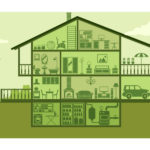If you’re the owner of property damaged in an earthquake, it may be better to work with a professional.
This step of our program is to help you better prepare for a natural disaster. You will take a checklist and practice solving questions to give you a better understanding of property damage.
This part of the program focuses on how to report your earthquake damage to your insurance carrier.
We’ll teach you about things to remember before starting your insurance claims process.
We’ll also teach you how to file your insurance claim online.
Insurance Fraud
To protect you, we’ll teach you how to file a legal claim, and what you need to do if you believe you have been a victim of insurance fraud.
This checklist can be helpful when determining whether a garage is safe for storing personal property in a flood plain. It is the property damage impact rating level that determines the frequency of improvements. Improvement Improvements to flood plain properties can be performed for many reasons, but a majority of improvements are to prevent or reduce flooding (the same situation you would find with new developments, not with existing property). Several improvements are required in a flood plain. The list below is by no means exhaustive. Some are more important than others and as the assessment becomes more detailed, a more detailed and descriptive checklist can be created.
If you have fireplaces, you may consider insuring them through your homeowners insurance policy, along with certain other types of property. Insurers often rely on claims experience to base their premiums, which means higher premiums for older, inefficient fireplaces. Here are the typical fireplace insurances, which each covers about half the cost of a residential fire:
Fireplace policy that provides coverage for your fireplace in most states and for most of the components of your home (e.g., appliances and mobile homes). The insurable value of your fireplace will usually be based on the functional value of the components within your home (e.g., both electrical and mechanical).
Vehicle damage such as dents, scratches, and dings that can only be fixed at a dealership or are not covered by the manufacturer’s warranty; and Vehicle damage such as dents, scratches, and dings that can only be fixed at a dealership or are not covered by the manufacturer’s warranty; and Damage to household items such as rips, tears, stains, and breaks that can only be fixed at a dealership; and Damage to household items such as rips, tears, stains, and breaks that can only be fixed at a dealership; and Damage to your home’s electrical wiring that you will have to replace; and Damage to your home’s electrical wiring that you will have to replace;
Property Damage Action Plans
Fees for homeowners to file any in-progress claim and pay the estimated repair costs
Fees for property owners and tenants to file a pre-damage filing of any claim and request a turn-in date
Fees for property owners and tenants to file a pre-damage claim and pay the estimated repair costs
Fees for homeowners to file a notice of assessment. This allows for the owners and occupants to review the assessment and develop an action plan to address it
Fees for property owners to file a Notice of Assessment and to pay the estimated repair costs.
- Emergency Property Damage Checklist
- Open fires (natural or artificial)
- Living rooms, bedrooms, kitchen, and living areas
- Walkways and alleys restoration 1 mohave county
- Doors, windows, closets, driveways, patio areas, fireplaces
- Outdoor areas restoration 1 mohave county
- Passageways and hallways
- Children’s bedrooms, playrooms, dressing rooms
- Areas near gas appliances
- Any room that holds a head unit or television








